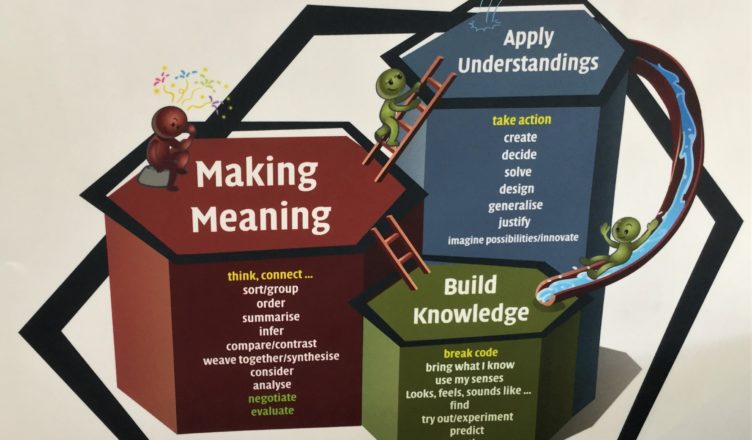I am torn between two worlds in which I live: the data world and the innovation world. It has been bothering me for sometime. Over the past 6 years I have visited numerous innovative schools that focus on helping learners figure out how they learn best and designing learning experiences with them to help them take charge of their learning. When I am in those schools I don’t see data walls or data journals, I don’t hear about test scores, and I don’t hear students worrying about getting a particular letter grade. These schools focus on student learning as the most important outcome and they trust that this will show up in their metrics.
In my data world it is quite the opposite. Data metrics are the focus of conversations: who is close to the next readiness level; who is low growth and by how much; how do we increase our student engagement score, etc.? These data conversations are focused on the metrics and school and district staff use these metrics in PLCs to determine school, grade level, and group and/or student strategies.
The crux: This focus on the metrics has been bothering me lately, a lot! I can’t seem to square it with what I am seeing in schools using learner-centered strategies. Their metrics are improving–without conversations focused on the metrics!
Are my two worlds incompatible? Can I resolve this seeming disconnect? The struggle is real!!! Then I came across an article in the Harvard Business Review, Are Metrics Undermining Your Business? (September-October 2019). The authors captured my angst and gave it a name–surrogation! It sounds complicated but it is really simple, I promise.
In business lingo, confusing metrics with strategy is called surrogation. Surrogation is a person’s natural tendency to turn a strategy into its metric! Still confused? The author’s example, the Wells Fargo debacle, demonstrates how the Surrogation Snare can get your strategy off track. Do you remember all those people who had bank and credit card accounts opened for them without their knowledge, lowering their credit scores? It turns out Wells Fargo employees were focused on a cross-selling metric which they had confused with the strategy—a strategy of building long-term customer relationships, as measured by cross-selling (Harris and Taylor, 2019).
You might be in a Surrogation Snare if you are focusing on increasing survey scores or putting up attendance billboards for student engagement rather than focusing on increasing students’ sense of belonging, connection, and relationships at school. You might be in a Surrogation Snare if you are spending more time talking about achievement and growth scores than you are talking about how to design student learning experiences that support powerful and deep learning necessary for each student to grow.
If you aren’t sure, take a moment to ask yourself these questions:
- In our team time, do we spend more time in data analysis and barely any time on what to do about the findings?
- Are our conversations mainly focused on summative and interim metrics rather than evidence closer to the learner that helps inform how to support them in their learning?
- Are we uncovering student thinking and where they are in learning progressions to design for the next steps in learning?
- Are team members reflecting on their current practices and connecting to or rethinking what they know or what they do as a result of discussions about the metrics?
- Don’t confuse the metrics with the strategy! If analyzing the metrics doesn’t lead to new ideas, new knowledge, new skills, and trying new things to improve student learning, then you might be in a Surrogation Snare. Strategies to improve learning have to connect to actions that impact learning and learners. In doing so, the metrics take care of themselves.
Harris, M. & Tayler, B. (September/October 2019). Don’t Let Metrics Undermine Your Business. Retrieved from
https://hbr.org/2019/09/dont-let-metrics-undermine-your-business

